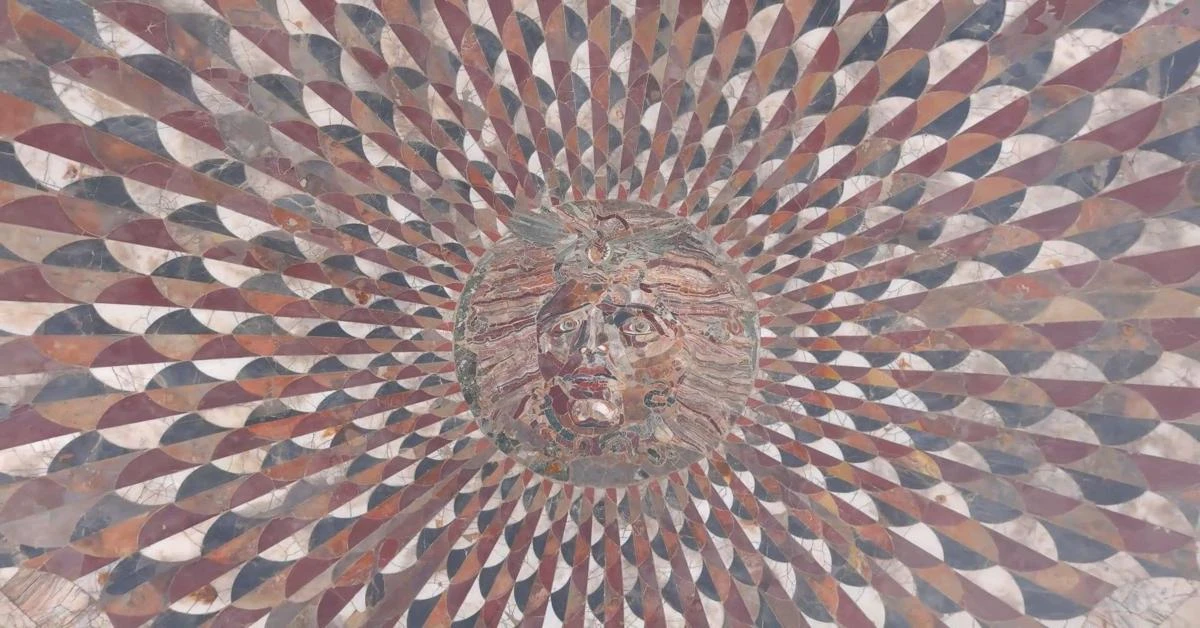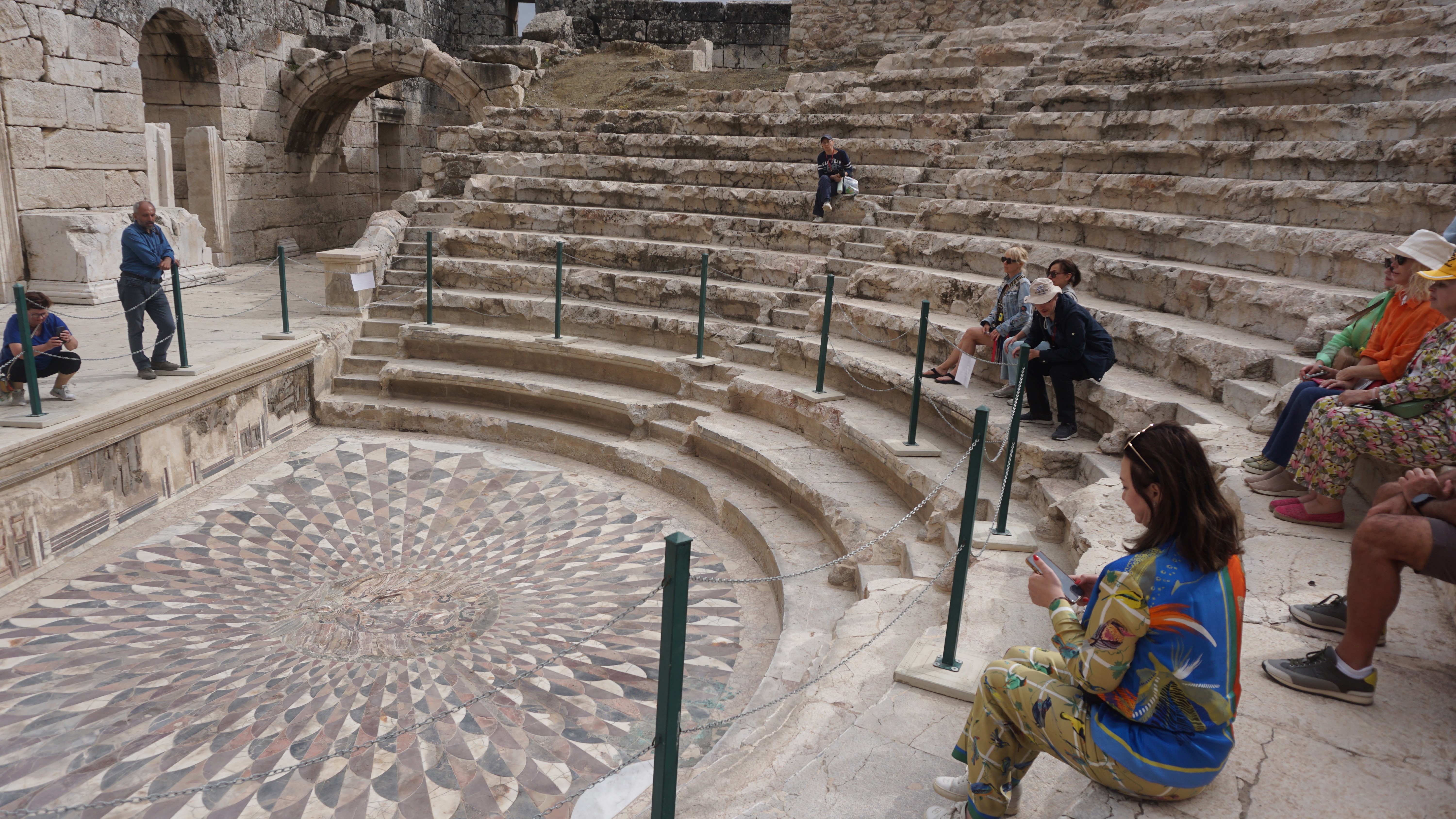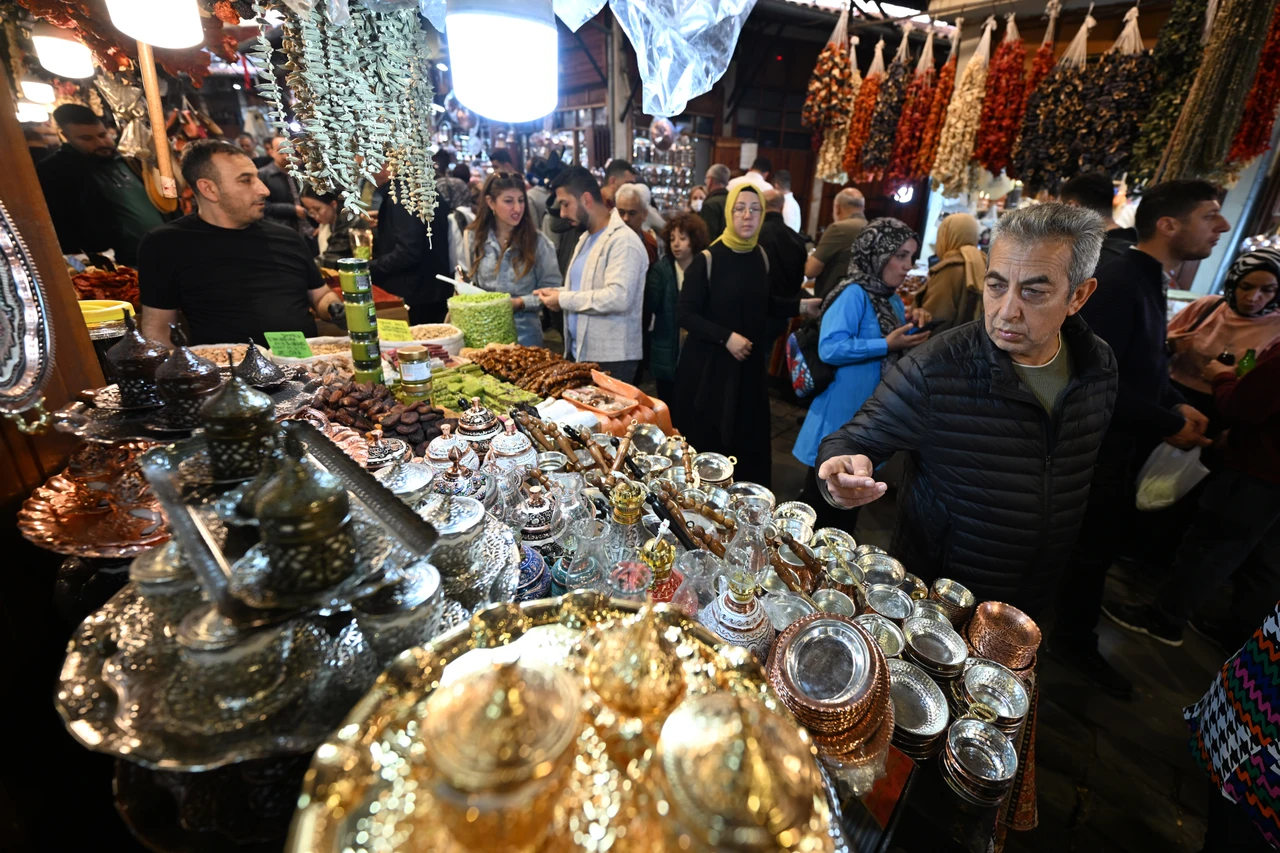Kibyra Ancient City’s famous Medusa mosaic opens season

The Medusa mosaic, built of colored marble with the ‘opus sectile’ technique, reopens doors to visitors on the first day of Tourism Week
The Medusa mosaic, located in the middle of the Odeon in the ancient city of Kibyra, known as the “City of Gladiators,” in the Golhisar district of Burdur, was created with the “opus sectile” technique and covered to protect it from harsh winter. It was reopened to visitors on the first day of Tourism Week, as summer is around the corner.
The unique monument, visited by thousands of tourists during the summer, dates back to the early stages of the 1st century A.D., in mythology, it is known as the “snake-haired, sharp-toothed, female monster” believed to “turn the malicious people who look into its eyes into stone.”

The Odeon, which was used as a concert hall, assembly, court, and covered theater in ancient times, is one of the most exciting works of art for visitors.
In 2006, Duzgun Tarkan, a Lecturer at the Department of Archaeology at Burdur Mehmet Akif Ersoy University who has long been involved in the excavations of Kibyra, said in his speech about the reason for the closure of the Medusa mosaic: “We routinely close the Medusa painting every year in early November for winter protection.”
“In mid-April, we open it to visitors again. We do it this way to protect the Medusa tile from damage caused by winter conditions. Because it is made of thin marble slabs, there is a risk of dislocation in cold and frost,” Tarkan said.
“To prevent this, we have routinely performed this process every year since 2009. The same process took place this year. We have uncovered the Medusa painting by purifying it from the protective layer again to remain open during the summer,” the lecturer added.

The Opus Sectile Medusa mosaic in the Odeon will be open to visitors until the end of summer.
Source: Newsroom



